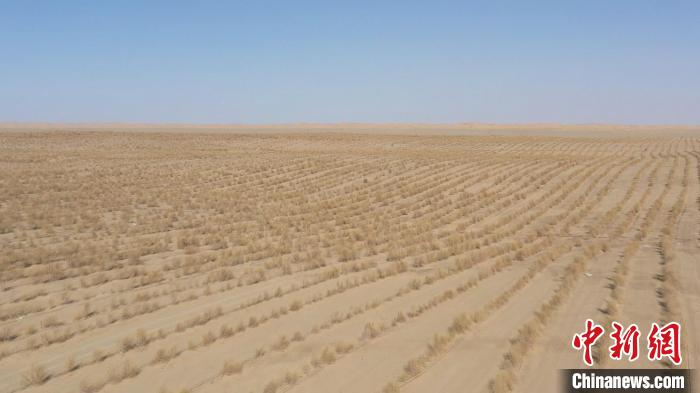Qiemo county in northwest China's Xinjiang Uygur Autonomous Region is experiencing a bountiful harvest of cistanche, a commonly used herb in Chinese medicine prescriptions, with local farmers busy harvesting the valuable plant.

Photo shows Haloxylon ammodendron, whose root is parasitized by cistanche, in Qiemo county, northwest China's Xinjiang Uygur Autonomous Region. (Photo/Anwaierjiang)
Over 90,000 mu (6,000 hectares) of cistanche has entered harvest season in Qiemo county, which is surrounded by the Taklimakan Desert on three sides. Using iron shovels, the farmers nimbly dug into the sand, unearthing one cistanche after another. In no time, they filled their woven bags with the cistanche.
Cistanche is a parasitic plant that grows on the roots of the Haloxylon ammodendron. It has an extremely high medicinal value, and is therefore prized in Chinese medicine as the "ginseng of the desert." The cistanche harvest not only brought good economic benefits to farmers along the sandy areas, but also solved the problem of high costs for the sand control efforts of Qiemo.

Farmers hold cistanche dug up from the sand in Qiemo county, northwest China's Xinjiang Uygur Autonomous Region. (Photo/Anwaierjiang)
Cistanche grower Tian Laiqun said: "There are over 10,000 mu of Haloxylon ammodendron at Hedong shelterbelt station for sand control. Over 5,000 mu has been intercropped with cistanche under these trees. Aiming at harvesting 1,600 mu this spring, we've so far picked up over 100 tonnes. The price per kilogram is between 7 yuan ($0.97) to 8 yuan."
Abasi Yisa, head of the Hedong shelterbelt station, said, "Our station introduced seedlings of Haloxylon ammodendron in 2005 and began planting cistanche in 2007. The yield per mu in spring ranges from 50 kilograms to 200 kilograms."